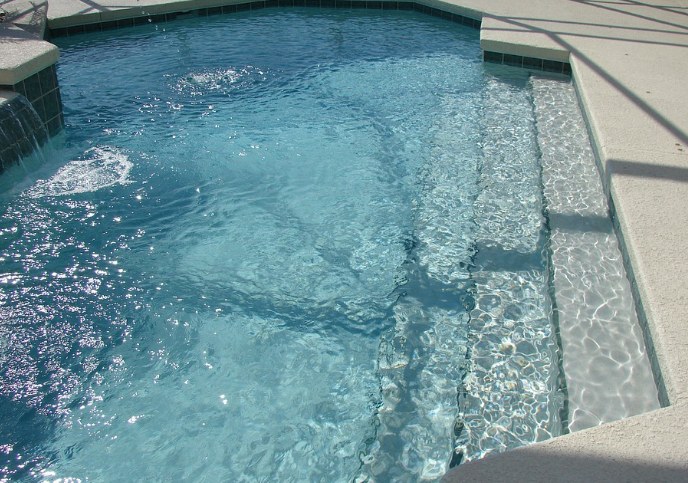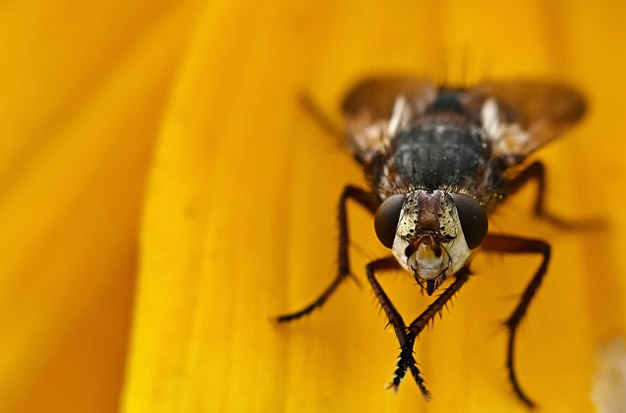How to Get Rid of Horse Flies Around a Swimming Pool
Summertime is the ideal time to enjoy the pool outside, but if horse flies are a problem in your area, the fun could be quickly ruined. In this blog post, we’ll give you advice on how to get rid of horse flies around the pool so you can take a leisurely swim without worrying about these bothersome insects.
Near swimming pools, horseflies can be an annoyance. Chlorine and other pool chemicals, as well as human and animal sweat and blood, all have attractive scents that draw them in. We’ll provide you with some advice on how to get rid of horse flies around your swimming pool in this blog post.
What Are Horseflies
Horseflies can be between one and two centimeters in size and are large, dark-colored flies with obvious compound eyes. Their most frequent locations include areas with long, damp grass, cattle, slow-moving streams and rivers, standing water, such as ponds and pools, and horse stables.
They are highly adapted visual hunters attracted to large, dark objects, movement, and carbon dioxide—all characteristics shared by warm-blooded mammals.
Why Do Horse Flies Swarm Near Bodies Of Water?
Due to their high activity levels in warm, humid weather, horse flies are frequently found close to lakes, beaches, and swimming pools. Horse flies are primarily drawn to water because they require it for egg-laying in order to survive. Horse fly females are bitters, so it’s essential to keep them away from swimming pools. Just during the daytime do they eat; not at night. If the temperature drops, there will be will horsefly attacks reduction.
Do Horseflies Bite?
Yes, and they are very painful. Horseflies will try to bite any large warm-blooded mammal, despite their reputation for afflicting horses and other livestock. However, only females have the ability to bite because only females consume pollen and nectar while males only consume blood to produce eggs. Horsefly bites can be excruciatingly painful, so if you ever get one, you’ll know about it right away. This is because horseflies bite in such a horrific way.
Mandibles that resemble saws are present on the female horseflies and are used to rip and slice open skin. When a wound is opened, they release an anticoagulant to prevent the blood from clotting. As soon as a hole is cut, they start guzzling that delicious, delicious mammal blood.
What Draws Horse Flies?
- Horse flies are first and foremost brought on by shiny swimming pools, muddy streambeds, excessive moisture, and pond edges.
- Horseflies frequently chase the dark-colored, rapidly moving objects that proliferate in swimming pools.
- Horse flies eat flower juice, both male and female. However, in order to produce eggs later, female horse flies must consume blood.
- The carbon dioxide that every mammal and human on Earth exhales is, you guessed it, another thing that draws horse flies. Fly swarms are attracted to swimming pools and ponds because the CO2 in their water is relatively warm. Horse fly organisms are capable of sensing the presence of carbon dioxide.
- Horse flies are quite drawn to light reflections. One of the explanations for why your pool is a great place for horseflies to find food is because of this.
It is crucial to eradicating female horse flies because they are the ones that bite. If there are swimmers in the pool, they may cause serious issues. Let’s now look at equine flies and how to get rid of them.
How Can I Get Rid Of Horseflies Around The Pool?
The natural pesticide pyrethrin is used in the process to get rid of horse flies. Most agricultural or supply chemical companies carry this concentrated pyrethrin insecticide in their product lines. You must adhere to the directions found on the pack, but it is generally safe to use.
Pesticides can eliminate the horse fly larva. However, because they reside close to rivers and streams, using pesticides in the water can contaminate or even poison it. When they are larval, it is very difficult to treat them.
As we’ve already mentioned, Pyrethrin pesticides are completely natural and extremely safe to use around both children and pets. Chrysanthemum, among other dried plant parts, is used to make it. Use organophosphate and organochlorine to get rid of horseflies in your garden or other areas to prevent them from developing resistance.

Bag Traps
These fly traps consist of two components: a fly food bag that draws flies and a funnel that lets flies enter but keeps them from leaving. This trap seems to be one of the most effective ways to get rid of horseflies.
On the other hand, the smell of fly food and imprisoned flies is very overpowering and potent. Place one or more of these traps far from the pool or any other gathering place. But don’t worry; horseflies can’t withstand the bait, so its effectiveness is unaffected.
Flypaper that sticks to your fingers
Hang the flypaper around the pool area after unrolling it. These hanging strips will draw and capture horseflies and other flying pests. When the paper starts to fill up or as needed, change them. Likewise, avoid stepping on them. We’re telling you, it’s a bad experience.
Pesticides
Spray pyrethroids and other natural insect repellents around the pool area and in your immediate vicinity. These pesticides are made from dried chrysanthemum plants and are suitable for use on both people and animals.
Use an insecticide with an organophosphate or organochlorine base alternately with another insecticide in different areas of your garden to prevent the horseflies from developing a resistance to one particular pesticide.
Horsefly Traps
Horsefly traps are large, hanging devices with moving parts that are designed to attract horseflies. Before they realize what they’ve landed on isn’t their prey, they’ll become trapped between the sections and be burned to death by the heat of the sun-warmed metal. Hanging this kind of trap in a location with lots of daytime sunlight will have the greatest impact.
Keep in mind to add some fly traps to your collection and maintain a healthy lawn. Ask for help from pest control professionals if you were unable to contain it.
Light Traps
These traps emit light that is intended to draw a variety of flying pests. When they come into contact with the light, they are immediately zapped and, in most cases, killed. Place a few of these traps around the pool area to quickly eliminate the horseflies. Keep them away from children to prevent them from being drawn to light because they are powered by electricity.
Final Thoughts
As you can see, there are still plenty of safe and natural options available for controlling and preventing horseflies around your pool.
Depending on how severe your horsefly issue is, you can try these solutions separately or in combination, as long as you keep yourself, your children, and your pets safe.
